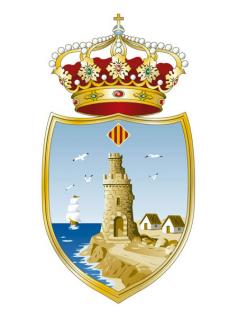Torrevieja

Torrevieja is situated in the south of Valencian community. It was originally a salt-mining and fishing village situated between the Medeteranean sea and two large salt lakes (Las Salinas). This location gives Torrevieja a unique healthy micro climate. It provides prophylactic and restorative health maintenance, alleviating respiratory ailments and providing improvement of the immune system in a natural and relaxing way. Bathing in the salt lagoons is becoming popular for many medicinal reasons.
The town shield explains the origins of the name of the city as Torrevieja literally translates "Old Tower". This Old watch tower was partially destroyed by the earthquake of 1829. It is a popular excursion destination and is located just a short walk from our apartment in Torrevieja. The shield sums up the history of the Torrevieja: sailing boats transporting the "white gold" around the world, as salt then was so valuable that it is said to have funded the voyges of Christopher Columbus; fishermen staying behind in small houses by the sea; red and yellow striped rhomb shows that once the area belonged to the Kingdom of Aragon.
History
The salt mine Laguna de la Mata was first mentioned in the Roman Chronicles as the Romans were the first to begin the production of salt here. The remains of the Roman docks are still to be seen in La Mata. At the end of the 15th century King Fernando I of Aragon decided to start fish breeding in the salt water lagoon. For that reason the canal was built bertween the sea and the lagoon. In 1533 the count of Valencia Vespasiano Gonzaga started building fortifications, castles and watch towers along the coast of the Kingdom of Valencia. Just then the Old Tower of Torrevieja was built. It took over two hundred years before the first fishermen with their families began to colonize the area. At the beginning of the 19th century it was still only the Old Tower and a couple of houses around it.1802 is considered a turning point in the history of Torrevieja. King Carlos IV moved the salt mine administration from La Mata to Torrevieja which was followed by a large scale construction of the town. In 1820 Torrevieja gained independence from Orihuela and that stimulated the growth of the town as a salt producer and exporter of fruit and vegetables grown in Vega Baja.
Modern Torrevieja
Now Torrevieja is a multinational community with around 100 000 inhabitants, a famous sea and salt museum and Habaneras - an international choral song competition that goes back to the time when the sailors exporting salt to Cuba brought back home Cuban songs and dances. This song contest takes place in August turning the squares and streets of Torrevieja into a big stage. Besides there are festivals, carnivals or pilgrimages there almost every month. Worth a visit are the Modernistic Casino dating back to the turn of the 20th century with a fmous hall in mazarabic stile, the church of "La Immaculata Conception", the former open air theater which is now turned into a restaurant with magnificent sea views. Torrevieja is well known as an outstanding port from where one million tons of salt are exported all over the world. Adjacent to the port is Torrevieja Marina. It is huge and has mooring places for up to 859 vessels. A new marina is planned for Torrevieja with additional 700 berths and docking facilities for cruise ships.
